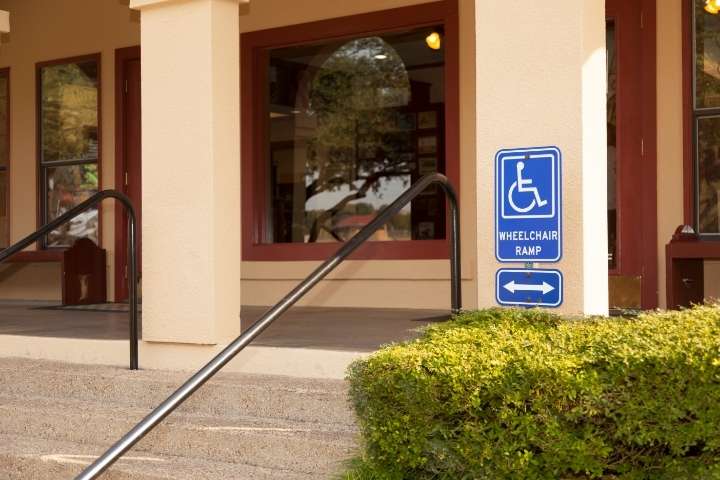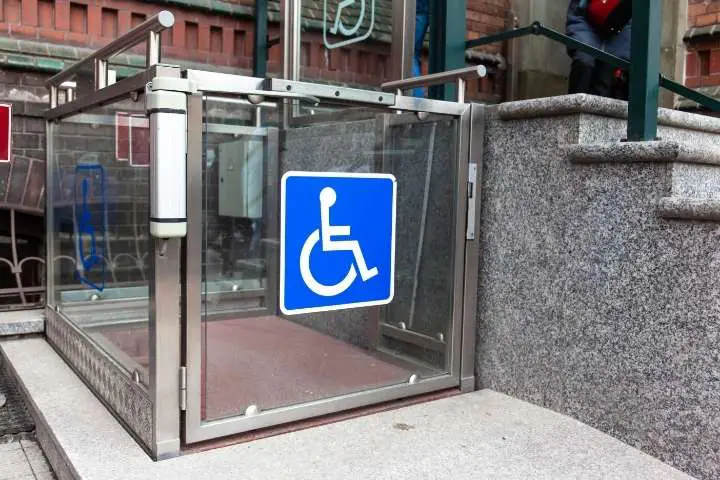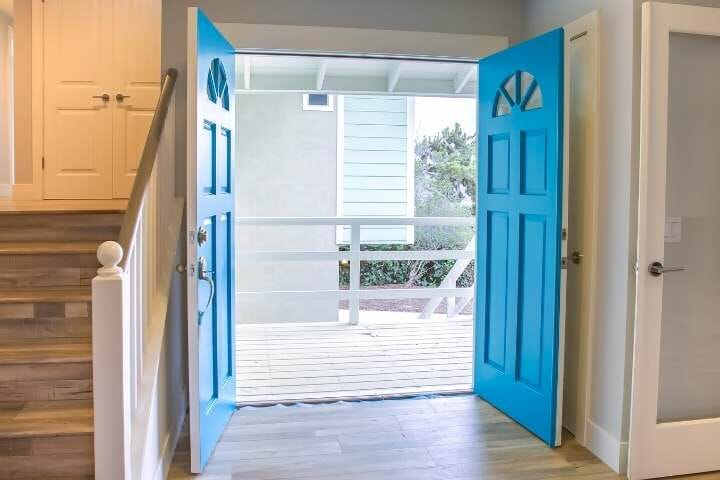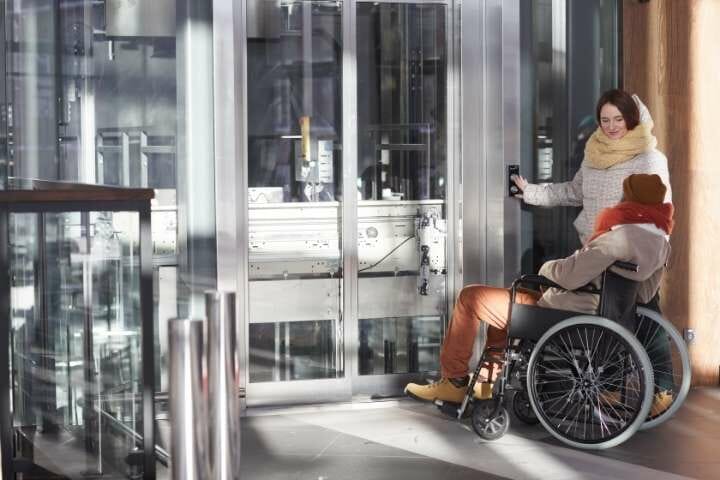
When it comes to visiting restaurants and shops that are not ADA accessible, it can be very frustrating for those who have a disability to try and navigate around the building.
If a business rents their shop space from a building landlord it can be confusing as to who it is that actually pays for the modifications to ensure that those with disabilities are able to get into the building and navigate around the store.
So, who is responsible for ADA compliance?
In short, the answer to this question is that both the landlord and the tenant are responsible for bearing legal responsibility for ADA compliance.
Since both of them are legal responsible for it, both of them are then open to liability risks should they be found to be noncompliant.
There are some details where the law clearly outlines that one party is more responsible than the other. For example, parking lots and sidewalks are clearly the responsibility of the landlord because it’s common property. So if there is noncompliance in these areas then the tenants/business owners cannot be found responsible for it.
Is the landlord not responsible at all for a tenant not being ADA compliant?
This can be a grey area because it can get a little messy when determining who is actually responsible.
While the tenant leasing the space is responsible for making sure the space they are leasing has the appropriate modifications for ensuring ADA compliance, the landlord could also be held responsible if the tenant hasn’t done it.
For example, if there’s a restaurant in the commercial building and it doesn’t have an ADA accessible bathroom then the landlord could also be held liable in any legal actions for the tenant not having an accessible bathroom.

You might like to read: What Are ADA Requirements for Elevators
Is there any way around a landlord being held responsible?
For many landlords, they will try to shield themselves from liability so that their tenants are the only ones completely responsible for any ADA noncompliance.
They do this by including language in the leasing contracts that alludes to the tenants being solely responsible for complying with all ADA laws that apply to the tenants business/industry.
This kind of language clause could be meaningless, though. These contracts are only applicable between two parties: the landlord and the tenant. If a third party – customer – comes in and is taking legal action for ADA noncompliance then it doesn’t, really, protect the landlord from being included as liable.
So this kind of clause does not stop a landlord from being sued by a customer or member of the public however it can work in their favor. If a landlord is sued, and the customer is successful, the landlord can use the language in their contracts to go after the tenants to help recoup some of the funds they have lost – and that could include legal fees.
New buildings vs. existing ones
When a new building is being built, often times the issues around ADA compliance do not come up because modern construction practices automatically include the appropriate accessibility into the elevators, common waiting areas and public bathrooms if they have them.
However, if it’s an existing building and it needs to be retrofitted for the modifications then it can be difficult and messy to figure out who is going to be responsible for making the appropriate changes.
What are the features need in a commercial building for it to be ADA compliant?
In 1990, the Americans with Disabilities Act was signed into law so that those with disabilities are able to access public spaces, restaurants and shops the same as able bodied people.
This act includes people with all types of disabilities, including impaired mobility, eyesight and even hearing.
You might like to read: Do Rental Properties Have to Be ADA Compliant?
There are specifications outlined by this act that determine exactly what features a commercial building must have in order for it to be ADA compliant including
- Doorways – the openings for doors must be between 32” and 48” wide for people to be able to clear the opening with a wheelchair or mobility assistive device
- Ramps – in new buildings, the ramps cannot be steeper than 1:12, but in an existing building where modifications needed to be made to accommodate the slope could be steeper due to space limitations.
- Bathrooms – if there are public bathrooms in a commercial building then they do need to have accessible stalls and clear, unobstructed floor spaces. Each accessible bathroom stall has to be at least 30” by 48” so that a wheelchair can get into the space without issue and use the bathroom.
- Signs/directions – many commercial buildings will have signs that direct customers and guests as to where they need to go. Any signage in the building has to have a matte, non-glare finish and the contrast between lettering and background should be about 70%. If the sign is permanently in place, then Braille is required on the sign (provided it is in a touchable space).
These are just a few general guidelines for how to ensure a commercial building is ADA compliant, however there are very detailed regulations that can be found in ADA documentation.
This document should be consulted when making modifications or building a new commercial building to make sure that all parts of the building meet the appropriate requirements.
If you have concerns, you can contact a representative of the ADA to have them come out and take a look at what you’re doing. They may be able to point out details that need to be adjusted where you wouldn’t have even thought of them.

Why is ADA compliance important for commercial buildings?
While it’s a law that all public and commercial buildings have to follow the ADA guidelines for accessible facilities, there are other reasons that a building may want to ensure that they have made their building accessible for everyone.
For example, if word gets out that a certain building or company doesn’t have an accessible building or doesn’t accommodate to those who have disabilities it could look really bad on the company and therefore affect their sales or public image.
Further, if there was ever to be an inspection of the building and it’s found to be in noncompliance the owner of the building could be fined up to $75,000 on the first infraction. So it may be a little more expensive to renovate or make a building meet ADA compliance, it is better to do the work upfront than to have to pay massive fines during inspections if you’re found to be noncompliant.
If those with a disability enter your facility and they have difficult navigating or getting to the place they need to be, they could pursue legal action against both the owner of the building and any tenants they were there to see.
You might like to read: What Are the ADA Requirements for Doors?
Is the landlord responsible for making sure the leased space is compliant?
The ADA states that the landlord is responsible for common areas of the building (like parking lots, entrance to the building and common bathrooms) but the rest of the responsibility will be determined by the contract the owner and tenant sign.
Most contracts will state that the tenant is leasing the space AS IS, which means if there are other modifications they need to make to be ADA compliant then the tenant will responsible for the cost of ensuring that happens.
In some cases, landlords can make tenants responsible for upgrades or modifications to common areas if the modifications are necessitated by the tenant coming into the building and opening their business there.
If the tenant was not in the building, and this specific modification was not needed, then the landlord may have a case for getting the tenant to pay for the cost or even part of the cost.

Final Thoughts
Compliance of ADA regulations is absolutely crucial for avoiding lawsuits, massive fines and even bad public image. For this reason, commercial building owners would find it in their best interest to address any accessibility issues quickly and have the fixed as soon as possible.
While there may be some situations where it’s a little unclear as to exactly who is responsible for which component in a commercial building, in other situations it is very clear.
You might like to read: What Are ADA Requirements for Kitchens?
Tenants are solely responsible for everything that is in the space they are leasing. If there are specific regulations to the industry their business is in then they will need to modify and update their leased space accordingly.
The tenant may need to confirm with the landlord before signing the lease that they are allowed to make the appropriate changes, and it does not violate the terms of their agreement.
For potential tenants looking for a space, they may want to meet with the landlord of the building to discuss what exactly the facilities look like and if there are major modifications that need to be made.
They may also want to take a look at the contract they are required to sign to determine what parts they are responsible for and what the landlord will be paying for.
As always, each side should consult with legal counsel before signing anything and to explain any parts of a contract that they may not understand completely.
